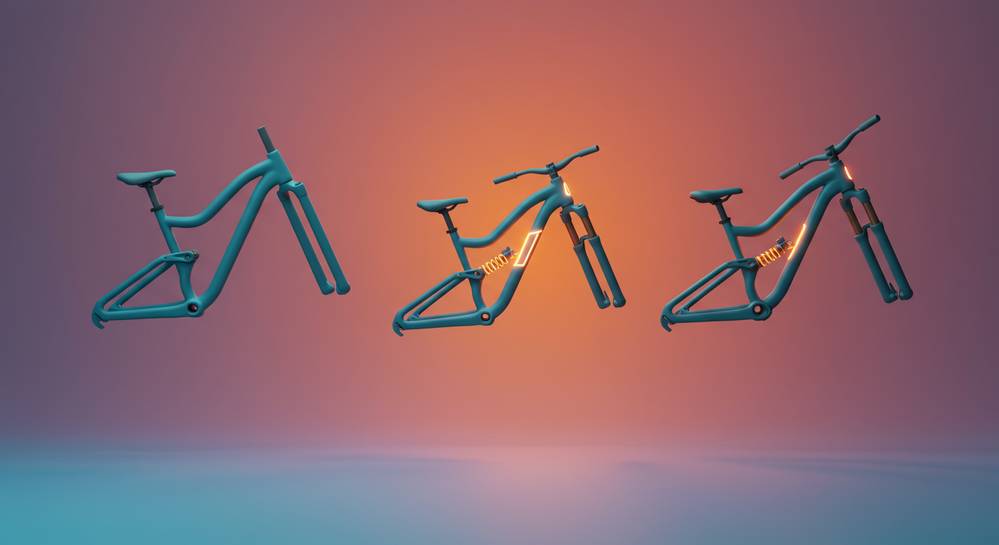Navigating the world of modern mountain bikes can be overwhelming, with countless options and technical terms. The process of how to choose a mountain bike is about more than just specifications; it is about finding a bike that matches your ambitions and the trails you want to explore. This guide will demystify the key decisions, providing a clear path to selecting the perfect bike for your adventures.
Define your riding style and terrain

The first step in how to choose a mountain bike is to honestly assess your intended use. A bike built for smooth trails will struggle on steep, technical descents. Matching your bike to your riding style is crucial for performance, safety, and enjoyment. This ensures your investment serves you well on the terrain you ride most often.
Cross-country for speed and endurance
Cross-country (XC) bikes prioritize efficiency and low weight for climbing and long distances. They feature minimal suspension travel, typically 80-120mm. If your rides involve significant elevation gain and fast, flowing singletrack, an XC bike is your perfect match. They reward powerful pedaling and are the fastest option on smoother terrain.
Trail for all-around versatility
Trail bikes are the most popular of all mountain bike categories. They are true all-rounders, designed to climb well and descend with confidence. With suspension travel from 120mm to 150mm, they handle nearly everything. This is the ideal choice for riders who want one bike for local loops and mountain adventures.
Enduro for aggressive descents
Enduro bikes are built to handle the most demanding downhills. They feature long suspension travel (150-180mm) and stable geometry for high-speed control. While they can be pedaled uphill, their main purpose is descending technical terrain. These bikes excel in bike parks or when racing against the clock on challenging stages.
Understand mountain bike suspension types

Suspension makes a mountain bike capable on rough ground, absorbing impacts for a smoother ride. A key part of how to choose a mountain bike is deciding between a hardtail and a full-suspension bike. This choice directly impacts ride feel, cost, and maintenance.
Hardtail bikes for simplicity and skill
Hardtail bikes feature a suspension fork but a rigid rear frame. This simple design makes them lighter, more affordable, and easier to maintain. They are an excellent choice for beginners or riders on smoother trails. Because they offer direct feedback from the trail, hardtails are fantastic for developing precise riding skills.
Full-suspension bikes for maximum capability
A full-suspension bike uses both a front fork and a rear shock. This provides superior comfort, traction, and control on technical terrain. While heavier and more costly, it inspires confidence on challenging descents. Proper upkeep is crucial, so understanding how to maintain your sports equipment is essential.
Consider wheel size and frame material
Beyond suspension, wheel size and frame material define a bike’s personality on the trail. These choices are a core part of how to choose a mountain bike that feels right for you. Each combination offers a different balance of speed, handling, weight, and cost, directly impacting your riding experience.
Choosing your wheel size
The modern mountain bike primarily uses two wheel sizes, with a popular hybrid option.
- 29-inch (29er): These wheels roll over obstacles easily and hold momentum well. They are ideal for speed and efficiency, making them a top choice for cross-country and trail riding.
- 27.5-inch (650b): Smaller wheels feel more nimble and playful. They accelerate quickly and are easier to handle in tight corners, often favored for aggressive riding.
- Mullet (MX): This setup combines a 29-inch front wheel for traction and a 27.5-inch rear for agility, offering a best-of-both-worlds approach.
Selecting a frame material
The frame material dictates the bike’s weight, stiffness, and price.
- Aluminum Alloy: This is the most common material, providing a great balance of strength, weight, and affordability. It is a durable and reliable choice for most riders.
- Carbon Fiber: A premium option that is lighter and stiffer, offering a more responsive and smoother ride. Carbon frames cost more but deliver superior performance.
Set your budget and ensure a proper fit

With your ideal bike type in mind, the final steps are aligning it with your budget and ensuring a perfect fit. These two factors are critical in the process of how to choose a mountain bike. An expensive bike that fits poorly is a bad investment, hindering your performance, safety, and enjoyment on every ride.
Establish your realistic budget
Mountain bike prices vary widely, so defining your budget is essential. A quality entry-level hardtail typically costs between $800 and $1,500. For a capable entry-level full-suspension bike, expect to spend from $2,000 to $3,000. It is also wise to reserve part of your budget for essential gear like a helmet, gloves, and proper shoes to start riding safely.
Ensure a proper bike fit
Proper bike fit is non-negotiable for comfort, control, and preventing injury. While manufacturer size charts offer a good starting point, nothing replaces a test ride. Pay close attention to the reach, which is how far you lean forward to the handlebars. Also, check the standover height for adequate clearance. A correctly sized bike should feel like a natural extension of your body on the trail.
Choosing the right mountain bike boils down to matching the machine to your specific needs, terrain, and budget. By first defining your riding style, then understanding the core components like suspension and wheel size, you can confidently select a bike that will serve as a reliable partner for countless adventures. For more insights into the world of sports, equipment, and training, explore everything Sporting Currents has to offer.


